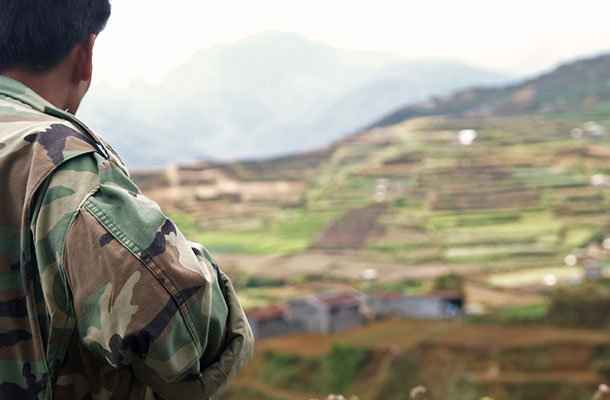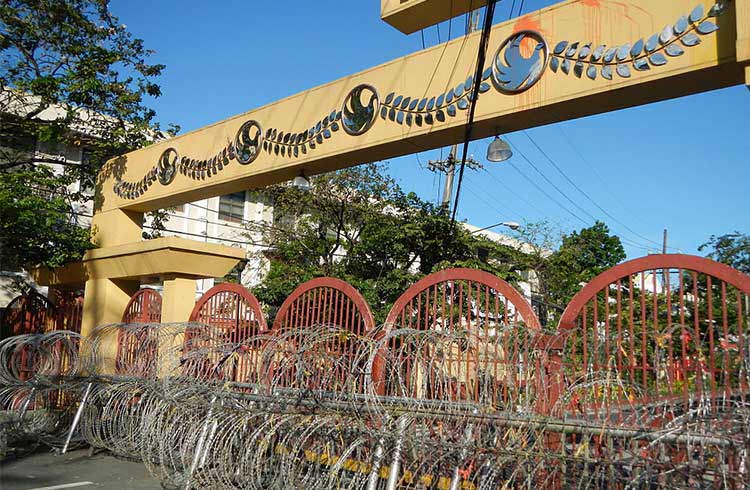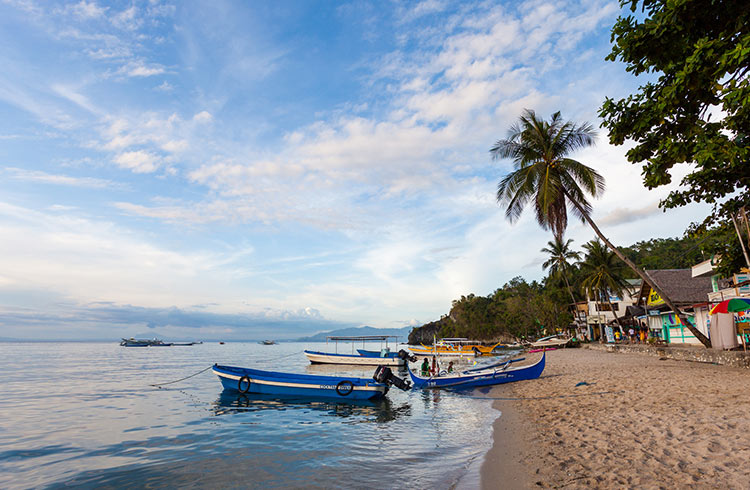Is The Philippines Safe? The Places Travelers Should Avoid
Find out which provinces in the Philippines you should avoid before you book your trip. From military areas to kidnapping hotspots, here is everything travelers need to know.
 Photo © iStock/suc
Photo © iStock/suc
The Philippines is a spectacular and engaging country but also has a higher crime rate than most Asian destinations. This is why it’s important to understand which areas of the country pose the most risk to tourists.
- Exercise caution throughout the Philippines
- Manila is both safe and dangerous
- Mindanao is a complicated destination
- The Sulu Sea is magnificent but riddled with pirates
Exercise caution throughout the Philippines
The majestic seas, dense rainforest, delicious food, and warm people of the Philippines make it an alluring travel destination. But it must be noted that it is one of the least safe countries in the Asia-Pacific region, according to a recent report by German research company Statista.
On that company’s order and security index, the Philippines ranked above only Pakistan, Sri Lanka, India, and Bangladesh. It found that the Philippines had higher rates of murder, theft, robbery and assault than most countries in the region. This doesn’t mean the Philippines should be avoided, only that tourists need to be cautious.
Security situations here are fluid, so before you visit be sure to check the travel advice offered by your home Government. Typically, these authorities advise it is relatively safe to travel in the northern part of the Philippines, but that far greater danger abounds in its south.
Manila is both safe and dangerous
Most international tourists land in the Philippines in Manila, the colossal national capital, home to more than 15 million people. Like so many of the world’s big cities, Manila has areas that range from very safe to genuinely dangerous. But few metropolises have such a stark disparity between wealthy and poor areas, which sometimes exist almost side by side.
For example, the Ayala Triangle area of Manila is so modern, clean and safe you could easily think you’re in downtown Sydney or Toronto. Yet just a mile west are rundown neighborhoods where houses are protected by barbed wire and windows covered in metal bars.
The most crime-riddled areas of Manila are its slums, which include parts of Tondo and San Andres. The former is just north of the city’s best attraction, the ancient Spanish citadel of Intramuros. The latter, meanwhile, is only a mile or two east of touristy Manila Baywalk, where many upmarket hotels are located. Both Tondo and San Andres should be avoided by tourists.
These giant slums provide residents with inadequate housing, health, education and employment services. As a result, crime flourishes. Some of Manila’s slums are controlled by gangs, and these criminals typically are armed, because the Philippines is awash with hundreds of thousands of unregistered guns, according to research by the University of Sydney.
Tourists in Manila should avoid public displays of their wealth. Keep your cash, jewelry and mobile phones hidden from view whenever possible. Manila is a fascinating city with wonderful people. But it’s also a dangerous place for naïve travelers or tourists who wander into the wrong neighborhood.

Planning a trip to the Philippines? Find out how travel insurance can help in case of unexpected illness, lost luggage, or other travel mishaps.
Mindanao is a complicated destination
Tourists who seek Philippines travel advice online will encounter endless websites advising against all travel to Mindanao. Not that I would contradict them, rather I would note that its security situation is complex. The US State Department’s advice on Mindanao is level three, which means “reconsider travel”. But both it and the UK Government advise against all travel to the western part of this island.
They explain that terrorist and militia groups in this area carry out bombings, kidnappings and other violent attacks, sometimes specifically targeting foreigners. Rather chillingly, the State Department warns that “the U.S. government has limited ability to provide emergency services to U.S. citizens in Mindanao, as U.S. government employees must obtain special authorization to travel there”.
The second-largest island in the Philippines, Mindanao has for decades been a haven for Islamic extremists. In recent years, hundreds of people were killed as Marawi City was under siege by terrorists for five months. That city is in western Mindanao, which traditionally has had greater security problems than the island’s east.
The complexity I foreshadowed relates to Mindanao’s capital, Davao, and its renowned tourist attraction Siargao. Davao, in the island’s southeast, is widely considered one of the safest cities in the Philippines. Tourists are less likely to face trouble here than in many other metropolises in the Philippines. Davao’s low crime rate is because the city is crawling with police and soldiers. That extreme security presence is necessary because of the dangers elsewhere on the island.
Meanwhile, tourists are also quite safe on Siargao, the magnificent tropical island in the northeast of Mindanao. Surrounded by a flawless coastline, Siargao is revered for its diving and surfing opportunities. It is isolated from the civil unrest in western Mindanao, which is 300km away.

The Sulu Sea is magnificent but riddled with pirates
A UNESCO World Heritage site, Tubbataha Reef is a massive marine park with some of the best diving spots in Southeast Asia. Unfortunately, this popular tourist attraction is also in the dead center of the Sulu Sea, one of the world’s piracy hotspots.
Although this sea, west of Mindanao, is patrolled by the Philippines navy, it’s so large that pirates still run amok. Each year, dozens of tourist boats, cargo ships and fishing trawlers are targeted by pirates, many of whom are linked to violent Islamic extremists, the Abu Sayyaf Group.
These seafaring criminals also occasionally kidnap passengers they perceive to be of high value, particularly foreigners. Tourists should carefully consider any boat excursion in the Sulu Sea. Fortunately, there are many other marine wonderlands across the Philippines that are safer, including Coron, Anilao, Verde Island, and Malapascua Island.
Related articles
Simple and flexible travel insurance
You can buy at home or while traveling, and claim online from anywhere in the world. With 150+ adventure activities covered and 24/7 emergency assistance.
Get a quote

4 Comments
I am planning to visit Polomolok South Cotabato 9504 where my girl friend reside in November 2024 to spend Xmas and get engaged / marry ' I am Black and I know that I will stand out as a black man. How safe will I be safe living there. Thanks In Advance for you Help
mr al my wife and i were in polomolok to visit family and our properties this year march/april for 6 weeks
people are very warm skin color makes zero difference sir the US could learn from them on this topic
now most of the people speaking about how bad it is have never stepped foot in south cotabato sir
its not how it was in the 90s when the insurgency was rampant u just have to be aware vigilant and humble dont be flashy or act better than them and ur good u will stand out as i did they will stare but just because not as many foreigners in polomolok i saw probably 10 during my 6 weeks but i was mostly on our farm all day u will be fine tho sir race not an issue my asawa half black and half filipina and im country white as u can get so relax have fun be humble and u will be loved
Is it safe for a Canadian to visit a woman in Butaan Philippines, I have always favored Luzon,as my philipino friends I know in Canada have suggested
Like to visit for a couple months and come back to Canads and contemplate retirement Philippines or Canada
Need a 100,000 pesos monthly in Canada
Thanks Mike Johnson
In reply to Al Marshall and Mike Johnson.
To get a reply about how safe it is in specific places, you might be better off trying one or two of the forums for expats in the Philippines. It sounds like you're both going to visit girls that you've never met in person. I think the dangers are not that you'll get kidnapped or shot at, but in interaction with other people, especially the girl friend and her family. If you're lucky, they will be a respectable family that wouldn't dream of cheating you or stealing your stuff. If you're unlucky, they will be after your money. Statistically, there are no doubt more of the respectable kind, but among girls you meet online, and their families, there may be more of the other kind.